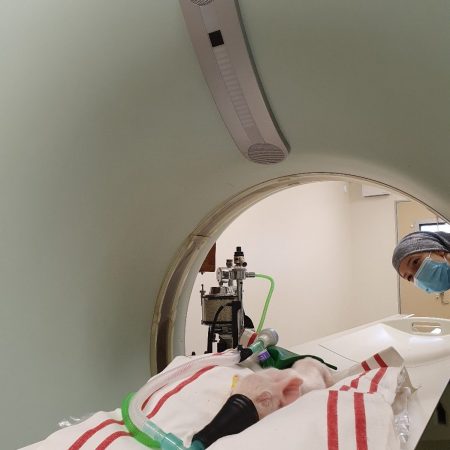Roberta Ruggeri, Oyekunle John Oladosu
The desire of pig farmers is efficiency and productivity, so sows with more piglets – also called prolific – are more valuable. And that’s exactly what breeding companies equipped with modern technology have achieved over the years. They have improved pig genetics, so the modern sow breeds deliver more piglets per year. However, like with most things, there is a trade-off!
Before considering the trade-off, let’s explore the benefits of such innovative breeding technique. Over the last decade, the prolificacy of European sow breeds has markedly increased. Today, they have on average more than 15 live born piglets per litter. The outcome was a decent increase in farm profitability.
Now, let’s consider the new problem that has emerged with the increased prolificacy. While the greater number of piglets born alive per litter may have been desirable, there is increasing number of piglets born undersized and with low birth weight. The piglets suffer from different degrees of what scientist calls Intra-uterine growth restriction (IUGRIntra-uterine growth retardation, is defined as the impaired growth of the fetus or its organs durin…). IUGRIntra-uterine growth retardation, is defined as the impaired growth of the fetus or its organs durin… is a condition characterized by an impaired development of the foetus or its organs during gestationA period of time between conception and birth. During this time, the fetuses (unborn piglets) grow a…. One reason that explains this phenomenon is the fact that uterine capacity did not develop to the same extent as the prolificacy, that means that for the same uterine space more foetuses develop. This results in impaired placental development and therefore impaired development of some foetuses. Under this condition, the placenta cannot sufficiently deliver nutrients and oxygen to the foetus nor transport away degradation products of metabolic processes. In pig production, it is estimated that 20% of new-born piglets suffered from IUGRIntra-uterine growth retardation, is defined as the impaired growth of the fetus or its organs durin…. A similar condition also exists in human neonatology, where it is estimated that 5-10% of human neonates suffer from such poor foetal development. The increasing widespread of IUGRIntra-uterine growth retardation, is defined as the impaired growth of the fetus or its organs durin… in pigs now cast doubt on the need for further increase in litter size. In fact, Suisag, the Swiss breeding company allot considerably less importance to litter size whereas mothering performance of the sow and percentage of undersized pigs now weigh more in breeding programs.

Classification of new-born piglets based on their head shape. A: normal piglet, B: mild IUGRIntra-uterine growth retardation, is defined as the impaired growth of the fetus or its organs durin…, C: sever IUGRIntra-uterine growth retardation, is defined as the impaired growth of the fetus or its organs durin…. IUGRIntra-uterine growth retardation, is defined as the impaired growth of the fetus or its organs durin… piglets are characterized by a dolphin-like head shape, bulging eyes and wrinkles perpendicular to the mouth.
IUGRIntra-uterine growth retardation, is defined as the impaired growth of the fetus or its organs durin… is further associated with greater early life mortality, impaired growth and poorer carcass and meat quality. Clearly, this is a situation that needs the attention of scientists to help farmers manage piglets that suffer from IUGRIntra-uterine growth retardation, is defined as the impaired growth of the fetus or its organs durin… as it both is a problem for production efficiency as well as pig’s welfare. A solution we are proposing in MonoGutHealth is to identify IUGRIntra-uterine growth retardation, is defined as the impaired growth of the fetus or its organs durin… prone pigs using a combination of biological and computational approach. Roberta Ruggeri (ESR 1) and her supervisory team at Agroscope, Switzerland and the University of Bologna, Italy are defining a machine learning model to describe the subpopulation of IUGRIntra-uterine growth retardation, is defined as the impaired growth of the fetus or its organs durin… and also employ a metabolomics approach to identify physiological traits specific to IUGRIntra-uterine growth retardation, is defined as the impaired growth of the fetus or its organs durin…. This information and tool will help researchers in further studies to accurately identify IUGRIntra-uterine growth retardation, is defined as the impaired growth of the fetus or its organs durin… piglets and help to develop tailored strategies to treat them and improve their survival and growth.

Computer tomography scan imaging performed on a new–born piglet to non-invasively assess the volume of the brain and the liver.